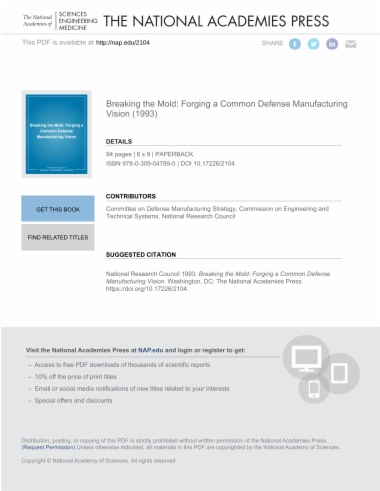

Given the dramatic changes in the environment for national defense, concurrent with rapid improvements in commercial manufacturing capabilities, the Department of Defense (DOD) requires a new approach to designing, engineering, manufacturing, buying, and upgrading weapon systems.
This book provides both a vision for that new approach and a strategy by which the DOD can accomplish the necessary changes. The result will be a higher quality, more cost-effective weapon systems and a stronger industrial base while still accommodating diminishing procurement budgets.